Lisa Niver's Blog: We Said Go Travel, page 349
December 8, 2014
March of the Living in Germany

THE MARCH OF THE LIVING
We drove an hour from Cracow to Auschwitz where we had toured yesterday, but this time we were joined by 15,000 Jews from 46 countries.
We lined up for the March just inside the Auschwitz gate. First in line was the delegation from Israel, which included many students and a group of Israeli soldiers. They were followed by a large group of students and adults from Hungary.
“Why Hungary?” I asked. Then I heard the sobering reason. Seventy years ago in April of 1944 the Nazis rounded up 420,000 Hungarian Jews and brought them directly to Auschwitz. In ten weeks they were all gassed to death. Almost half were children.
I decided right then that I was marching for them.
Indeed I was. Each marcher was given the name of a Hungarian child to march for. I had Anne Zucker from Budapest. She was two years old when she was sent to the gas chamber. TWO YEARS OLD! What could she have done to deserve this fate? How could God have let this happen to her?
I marched for little Annie and my heart ached for her.
In total the Nazis murdered 600,000 of Hungary’s 800,000 Jews.
We marched en masse from Auschwitz to Burkenau “the largest Jewish graveyard in the world.” In every direction I looked I saw masses of people, old and young, a sea of royal blue and white. Many had wrapped themselves in Israeli flags.
As we marched we heard the names of the Hungarian Jews who died in Auschwitz. I placed a marker in the ground to honor little Annie Zucker. Another one I placed to remember all of my family members who were shot to death and burned at Baba Yar in Ukraine.
One young boy whose great grandmothers both had died in Burkenau asked a rabbi if he could have a Bar Mitzvah on the train tracks that brought his great grandmas here. The rabbi performed the service on the tracks with the boy in front of a tearful but cheering crowd.
A very moving ceremony followed the March on the grounds of Burkenau.
The President of Hungary was critical of his own country for not trying to help its Jewish citizens. He asked for a minute of silence for those who died in Auschwitz. He told us that if we took a minute for each individual who was killed here we would be sitting silent for three years!
The Head Rabbi of Israel told us not to let the Nazis win by abandoning our Jewish roots. “Come home” he implored. “Come home to Judaism!”
Israel president Benjamin Netenyahu addressed us by satellite. He reminded us that mourning the dead is important but not enough. We must also pledge to stay strong and support Israel to defend the Jewish people against those want to destroy us now.
The ceremony concluded with a stirring rendition of Hatikva.
More than ever before I am proud to call myself a Jew.
Thank you for reading and commenting. Please enter the Gratitude Travel Writing competition and tell your story.
The post March of the Living in Germany appeared first on We Said Go Travel.
Los Campos de Sueños, Dominican Republic

Getting Busy: Manny Mota and Los Campos de Sueños
The dirt streets of El Tamarindo are dusty with walkers. El Tamarindo is a village that was blown here sixteen years ago by Hurricane Georges. Tens of thousands on Hispaniola lost everything. Many ended up in this barrio.
We are dusty, too, with walking. Shacks crowd the road; we glance into doorways and people trot out to join us. At the end of the lane there appears a green cinderblock wall which the dirt road divides widely. This is El Campo de Sueños, The Field of Dreams. We pass through—to a sprawl of ball diamonds opening out toward distant fences, their backstops rising like totems. It is slightly surreal: so much groomed grass might just be dream fields. Our group is large now, mostly women with children, their clothing colorful, their smiles shy. We approach a swing set where kids clamber noisily, then arrive at a grand pavilion. And here is what’s going on today.
Hundreds have traveled the lanes to line up by this pavilion. Babies and toddlers are everywhere in arms, small girls sit on the low walls. There’s good will in the air; it feels like a social event, a dance or a cock fight. Inside, beneath the high tin roof a table of chatty nurses receives a line of mothers with much note-taking and laughter and commiseration. Beyond them a great sussing of health is under way. Smart young doctors in white are listening to chests, peering into eyes, tapping and squeezing and prescribing. A shirtless boy leans forward and coughs energetically while his friends grin; nearby a young woman sits, her hands mild in her lap, as a dentist plies the steely implements. Some soldiers in camouflage cheerfully wave in the next group of patients. Gradually the order becomes clear. This is one of the frequent medical service days held at El Campo de Sueños, when residents of nearby towns come for free health care. They bring their aches and pains, and receive expert treatment—and prescriptions that get filled just over at the next building.
While this is going on, down the slope at a small baseball field newly cut into the scrub, two teams of seven-year-olds are squaring off. Their blaring jerseys are tucked into their baggy trousers, and they shuttle on and off the field with gusto. A golf cart purrs up and a handsome gentleman with blazing teeth hops out and shouts some orders. It’s Manny Mota, engine of all the activity in this place. A white bucket appears beside him, and he commences pitching underhand, a few feet from the plate. The helmeted batters swing lustily, and he corrects and commends them with sage humor. This Manny Mota is the holder of the major league record for career pinch hits, and a .306 lifetime average. The Campo is where he puts up newer numbers. For the last half-decade he’s been building this complex. Hundreds of El Tamarindo villagers get their water from the wells he dug a couple years back. It saves them hours of walking each day. Mornings he serves up 150 breakfasts, and some days lunches, too. And every day there’s baseball—on five sprawling fields.
The sky piles its clouds far beyond the fences, and a big rain blasts down. Kids dash laughing under the pavilion roof, where the operations are winding up. Drying off, Manny Mota talks about this place, his eyes following the kids. “My wife and I used to feed people in our home. One day she said, ‘You know, we could make a life out of doing this.’ So that’s how we started. After the hurricane, when the government moved the people here, you know, I guess we got pretty busy.”
Thank you for reading and commenting. Please enter the Gratitude Travel Writing competition and tell your story.
The post Los Campos de Sueños, Dominican Republic appeared first on We Said Go Travel.
December 7, 2014
Gasping, Flying, and Heart Smiling in the USA
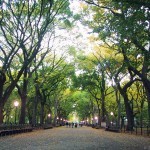
It is the garden within the concrete jungle. You find yourself walking toward this not so secret garden. Suddenly the grey concrete disappears, and you are hit with bursts of green. Time begins to slow and you allow yourself to take the first full breath you’ve taken all day, all week, all month. Walking around “the city” you can get overwhelmed by it. You are one small person in a sea of bobbing heads within a jungle of skyscrapers. You find yourself constantly short of breath because you are always in state of hurry. That is why it is so important for you to get to that garden because that is where you can finally take that long-awaited breath your body is gasping for. Maybe it’s because the trees absorb all the carbon dioxide or there is an invisible sound proof barrier that keeps the noise of the hustle and bustle out. Whatever it is you instantly relax when you pass the old stone gates to the park.
Now New York City is filled with many different kinds of people. It is one of the most diverse cities in the world. However the only place you actually get to see all of them, where you actually take a moment to people watch, is in Central Park. You see young people, old people, long people, and short people. You see people riding bikes, people riding carriages, people walking, and people running. Here you can see every person’s smallest action almost in slow motion. You begin to lose yourself in the moment, and that’s okay because it sets you free. Free from worry, fear, sadness all those things that weigh you down. If your body could fly, it would do it now so close your eyes, stretch out your arms, and fly!
Once you’re grounded again, you realize you’ve walked deeper into the park. It’s quieter here, peaceful even. The pleasant chatter has faded and all the conversations you hear are of the birds with the trees, the trees with the wind, and the wind with the water that fills the lake you are staring at. You see an old fortress at the edge of the lake, reminding you of battles lost and of people that once were. Dwelling on the past makes you sad. Then you see a young couple pushing a carriage which holds their most precious possession with happy, green eyes. Those young, green eyes give you hope for a brighter tomorrow, and it’s enough to make your heart smile.
Finally you’ve caught your breath and you feel refreshed. Taking this little stroll in the park leaves you feeling invigorated, alive! You’ve regained your strength, and you are ready to conquer whatever the concrete jungle has in store for you. Whether its work, family, life it doesn’t matter because you are ready. You are free, you are hopeful, and you are strong. So as the green fades and the grey takes its place, remember those three things.
Remember that happiness is the effect of your heart smiling so cherish those places that allow your heart to do so.
Thank you for reading and commenting. Please enter the Gratitude Travel Writing competition and tell your story.
The post Gasping, Flying, and Heart Smiling in the USA appeared first on We Said Go Travel.
Power and grace in Teotihuacan, Mexico
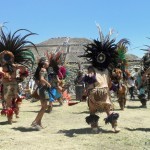
There is powerful, freeing beauty in this world that transcends any travel show or guidebook if we open to it and are ready. Mexico is full of that for me.
Well before the violent troubles of the last decade, I first camped on beaches near Ensenada with my parents, all of us sleeping in a big canvas tent. One summer we drove far south through Mazatlan, Aculpulco and past the glamorous fountains of Guadalajara, which I studied while sick with tourista from the back seat. We devoured bags of fresh pastries from corner Panaderias, lobster purchased on the beach from local fishermen and fresh tortillas made right before my eyes. I always longed to return but life intervened.
Decades later I gasped at my first glimpse of the pyramids of Teotihuacan. There was just a giant snake’s head in stone, broken steps and a bit of sky but something resonated. It was part of an email invitation to visit the place where traditions say, “Man becomes God.”
I knew I had to go but had very little income or freedom to travel. My son was still a toddler and his father was on the road with work. How could I ever swing it? In less than a month the money came in unexpectedly. I felt so grateful and found the courage to make plans. The trip came together – five days on my own in a country where I didn’t speak the language with a group I’d never met – but soon I was on my way.
Teotihuacan lies about 40 miles outside of Mexico City. Upon arrival at the airport I rendezvoused with the group just outside of customs. My first glimpse of the Pyramid of the Sun, was from a van, the pinnacle dodging between roadside trees as we sped towards the Villas Archaeologicos, our home for the week.
Our loose-knit group was led by an elder from the tradition of don Miguel Ruiz, author of the Four Agreements. Victoria Allen led us up the Avenue of the Dead, through simple rituals where we walked or sat in between ancient stone walls on hard earth and cast off “that which no longer served.” The rituals reminded me of something I hadn’t known I missed. My Catholic school days had been very theatrical – full of Latin masses and ceremonies with incense, candles and chanting. I’d missed some of that.
On our last day in Teo we walked purposefully towards the Pyramid of the Sun in focused silence. I kept repeating to myself all the things that I am not and soon added all the things I’d been identifying with: mother, daughter, wife, writer and renounced them as well. There was a shift and instead of emptiness I felt the world expand. There was no me only presence and it swept through the ruins, between the mountains, across the sky. Any sadness, disappointment or lack evaporated. I felt completely present and whole, silent and free. Later I struggled up the Pyramid’s steep, narrow steps to the apex. Butterflies bounced past in the sunlight and my heart soared with them.
I’d experienced a little of what Teo deeply is and has been for centuries. Tourists still scour the place with guidebooks in hand. Touts offer silver bangles and fill the air with the peals from little ceramic whistles. Through it all Teo remains a power center.
I came home feeling strong and clear, so grateful for the opportunity to inhale that rarefied air and be with others open to the same. My life soon turned inside out. Change isn’t always easy but often necessary. I’ve returned half a dozen times to renew and surrender in that sacred, beautiful place.
Mexico will always be dear to my heart and I now know there are power centers across the globe. They can be monasteries or retreat houses, crumbling ruins or a simply a towering forest. In time I’ll find more.
Thank you for reading and commenting. Please enter the Gratitude Travel Writing competition and tell your story.
The post Power and grace in Teotihuacan, Mexico appeared first on We Said Go Travel.
December 6, 2014
First Taste of Travel in Europe
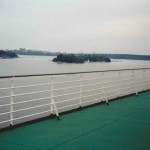
After months of planning, the trip was finally happening. I was thirteen years old and excited to be traveling outside the U.S. for the first time. Things did not exactly go as expected.
Our first destination in eastern Europe was Estonia. We had friends who invited us to their little countryside village, and would pick us up in Tallinn. For reasons still unknown to me, we couldn’t get a direct flight. But, we discovered, we could fly into Stockholm and take an overnight ferry to Tallinn. That seemed like it would be fun, I thought. A fitting start to an adventure. And so it was.
Having boarded the ship, the three of us—my mom, my aunt, and I—along with our two suitcases apiece, dutifully took the tiny elevator to the right level and clunked down the dark hallway to our assigned cabin. Erm…
Not that we’d expected a luxury stateroom, but this was a rather dark and miniscule cube, mostly occupied already with the bunks at one end. The wet bath took up most of the rest, leaving a table and a couple square feet of floor. Now it was clear why the woman at the check-in desk had laughed when we’d asked for an extra mattress. Having loaded the bunks with all our luggage, one of us still had to stand in the bathroom in order to shut the hall door. The room was lit by a couple of dismal-looking lamps which did not help brighten the windowless, airless space.
Then the ship must have gotten under weigh, because the noises started. Prolonged clanking noises, almost like—chains.
“Oh my God,” the realization hits. “We must be underneath the car deck.”
“That’s why there aren’t any portholes,” is the second revelation. “We’re under water.”
This reminds us unwillingly of the ferry accident that had been on the news earlier that year, 1999. We all concur on needing some air.
On deck, I zip up my too-thin fleece against the cold, wet wind, and watch the Swedish isles float past, green ghosts in a foggy, rain spattered sea. So this was to be the start of our three months living in eastern Europe, making our way from the Baltic nations of Estonia and Latvia, to Belarus, Ukraine, finally back through Belarus to Lithuania.
And it was an adventure indeed. I never knew it was possible to fit two people on one narrow bunk. Or to sleep listening to the creaking, banging weight of cars shifting above you. Our Estonian apartment was in the newest building, the envy of the village, which included such luxuries as a balcony threatening to fall of the building, and chunks of concrete that already had. We discovered that you have to pay extra for bedding on sleeper trains; in case you neglect to do so, you sleep on wadded-up clothes, and find yourself glued to the vinyl at the end of a night being jostled across two countries. I learned such essential phrases as “where’s the toilet” and “I don’t understand Russian.” McDonald’s became a delicacy—after plain boiled potatoes French fries are a taste of heaven. We became proficient at roach-hunting since our flat in Minsk was infested with them, down to inside the tiny, partially operational refrigerator. Not that there was ever much in it anyway. Our Russian phrasebooks were not very helpful on grocery shopping. Nor, for that matter, on any other topic.
Being only thirteen, this was all extremely educational for me. I hauled luggage that weighed as much as I did, learned to navigate public transportation and took in a confusing new language on the fly. I saw castles and monasteries and catacombs. I learned how, underneath our cultural differences, all people want the same things. We all love, we all dream, we all hope for a better life. I have traveled internationally several times since then, but that was a summer vacation I will never forget. And I will always be grateful for the experiences I encountered there, for the people I met, for the countries I saw, for an expanded perspective that taught me to appreciate the truly important things of life.
Thank you for reading and commenting. Please enter the Gratitude Travel Writing competition and tell your story.
The post First Taste of Travel in Europe appeared first on We Said Go Travel.
Embracing the Madness in Morocco
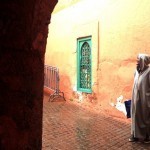
Embracing the Madness in Morocco
by Andrea Duty
Sometime between being caked with black soap and having my boobs scrubbed with what I can only assume was steel wool, I got the giggles. I should have clued in to the oddities to come within the hammam when I was handed a white paper thong upon entrance, but I didn’t. Now, there I was, sliding around on a hot marble slab while some woman hosed me down and repeatedly ordered me to flip over, as if she were basting a rotisserie chicken. I was eventually – mercifully – swaddled in cocoon of towels, ushered to a pile of floor cushions, and fed an endless supply of warm, mint tea. In the end, I felt much the same way as I did during the rest of my stay in Marrakech, which is to say: confused, mildly abused, yet exhilarated nonetheless.
For the uninitiated such as myself, Marrakech can swallow you whole. If London is an anthill of organized layers and regimented routines, Marrakech is the feeding frenzy atop a pile of picnic leftovers. It’s raw, chaotic, colorful, and, at times, jarring.
But sometimes chaos is what we need, isn’t it? To be tossed into mayhem; thrown back to that place where we see everything anew again, as through a child’s eyes. It’s only when we are placed into the unfamiliar that our senses are sent into overdrive, forcing us to live in the present moment.
And to walk through the streets of Marrakech is to have the present moment unceremoniously shoved in your face. Fumes float from the tanner, a metal worker hammers, neon dye drips from wool strung above. Donkeys drag, motorcycles rev, verbena hangs brittle in the sun. A thick snake sways languid to a tune. Cool orange juice to squelch the heat. Hello/Hola/Bonjour, Madam! Special price just for you! Come inside, just to look! Snails for one durham! Scarfs! Soap! Spices! Three men pull a lamb from a pit, steamed and salted. The street is sweet with cumin. A stop for tea. The call to prayer. Five times a day all is dropped. Five times a day, the movement, the melody, the madness is put on pause. Five times a day, there is space to draw a deep breath and take it all in.
The whirling chaos of the Red City often left me frazzled (and once drove me to tears), but it also gave me the cultural slap in the face I so love to experience and am finding increasingly difficult to find. Most of my travels have been to sanitized, Western countries and it seems I’ve forgotten what it’s like to feel so utterly out of place, what it’s like to have expectations shattered in the best way possible.
I thought I was traveling to Morocco for warm weather and a tagine or two, but what I got was a glimpse into another world and a reminder of how grateful I am for destinations that challenge my comfort, my routine and my ideas of what travel is meant to be. Marrakech taught me to embrace discomfort and vulnerability and, yes, even white paper thongs, because it’s in these states that we learn to challenge ourselves and in doing so, broaden our ideas of the world and the lives lived within it.
Thank you for reading and commenting. Please enter the Gratitude Travel Writing competition and tell your story.
The post Embracing the Madness in Morocco appeared first on We Said Go Travel.
December 5, 2014
Whirling Dervishes, Turkey
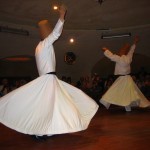
A curtain was pulled back and figures emerged from darkness in a shaft of light—a half dozen cloaked musicians with medieval instruments. They arranged themselves on rugs, the light faded out, and the sounds of reeds, drums and unfamiliar string instruments filled the dark confined space. It was surprising how these primitive devices could create such a palpitating mood of expectation.
My mouth was dry as the volcanic rock surrounding me. Moments earlier, I’d entered the cave and passed through a tunnel that widened into a circular arena. Outside, the air had been uncomfortably warm, but the blistering heat couldn’t reach through tons of insulating rock. I was in Cappadocia to see the famous Whirling Dervishes.
Apprehension had nearly prompted me to cancel my trip to Turkey, a secular country with a 99.8 % Moslem population. Back home in the States, Islam was perceived as a religion whirling into fanaticism and violence, with far too many people painting all Muslims with the same brush. I’d come to explore this religion for myself.
As a kid, I’d fling out my arms and spin around as quickly as I could until I was so dizzy I’d collapse on our front lawn. Was that what this was about? Watching grown men in skirts spin around without getting dizzy?
A voice in broken English admonished us against taking pictures until after the ceremony. The Dervishes entered, dressed in black but for their towering beige camel-hair hats. They appeared to be glowing, as if light emanated from them. To deepen my experience I’d recently read about the Dervishes, and learned that their monastic life was outlawed in the 1930s by Atatürk, founder of the modern Turkish republic. Atatürk maintained that young Turkish men shouldn’t be hidden away in monasteries. He wanted the country to shift its attention from religion to the progressive ways of the West, but his secular vision for Turkey was rapidly coming under attack.
The Dervishes bowed to the empty hat on far side of the circular stage, their tall hats (tombstones for the ego) seeming to defy gravity by staying on their heads when touched to the ground. According to our guide, the bow was to honor Mevlânâ, their thirteenth century spiritual leader. Mevlânâ, creator of the Whirling Dervishes, was said to have whirled for two full days. It was his belief that the fundamental condition of existence was to revolve. He knew the world to be made of revolving atoms, knew that blood revolved within the bodies of men and animals and understood the revolving nature of the planets and stars. His achievement was to acknowledge and embrace this feature of existence through an act of homage—whirling.
They looked exposed when they removed their black cloaks, as if the whiteness beneath was not only purity but vulnerability. Lined up, they acknowledged each other, and slowly, one by one began to spin in the confines of the cave, giving the impression of dropping into a fathomless void like falling snowflakes. We sat close enough to feel the uplift of wind from their skirts as they spun in the same direction as the Earth on its axis, one hand pointed upward to receive the blessings of Allah while the other was turned downward to pour Allah’s blessings onto the people. Nothing was kept for themselves. Their simple gestures filled my soul with gratitude.
I finally understood that this was not a performance, it was a ritual, a re-creation of infinity and creation, a thousand year old version of a high energy particle accelerator
operating in the bosom of the Earth.
No one has ever been able to point out for me the differences between Allah and God, and I’ve come to assume that, if there are any, they’re insignificant. I can’t claim to know what these Whirling Dervishes believe, what thoughts animate their spirits, but their sincere commitment to Allah and His universe lead me to accept that they’ve achieved a harmony with existence that I can only imagine. I might not understand their beliefs, just as I don’t understand many of the tenets of my own religion, but this manifestation of faith made me feel strong and hopeful that the pendulum of religious hostility outside this cave might one day swing in the direction of peace and tolerance for people everywhere.
The thought was enough to set me whirling.
Thank you for reading and commenting. Please enter the Gratitude Travel Writing competition and tell your story.
The post Whirling Dervishes, Turkey appeared first on We Said Go Travel.
Learning, the hard way in Venezuela
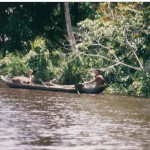
Learning, the hard way
“Where are you right now?” his mother asked on the phone. The connection crackled.
“In Tucupita,” he responded.
“Ah, Tucupita.” – as if it was New York City or London. The young man grinned. His parents were from a small town in Germany and had never traveled much.
The young man returned to his travel companions, the couple in the café, and related the story. They all chuckled. Later he went and got a souvenir for his parents, a dried piranha, mounted on a piece of wood. “They will love that!” he defended his choice before his travel companions.
The day had started out bad. A stranger had knocked at five in the morning on the couple’s door in the cheap guest house. When the young woman had opened, still dazed from slumber, he had offered to take them on the Amazon River jungle tour. Her Spanish wasn’t that great, being half asleep. She just shooed him away with a “màs tarde” – later – and had gone back to bed.
When they finally got up, she was mad. To have her sleep interrupted on her vacation was unforgivable. Over breakfast at the little café she had scrambled all her Spanish together to really tell the man off. The whole café then witnessed the scene and laughed about the man and the astounded look on his face when the tall, skinny, red-haired lady had thrown swearwords at him.
The three walked down to the river and found another boat to hire. The tropical heat was already getting unbearable, and it wasn’t even 10 o’clock yet. Equipped with straw hats and cameras they got into the little boat and their newly found guide pulled the rope to start the out-boarder. After a few tugs the motor started and they cruised down the larger arm of the river, past some straw huts build on small islands with a bunch of little brown kids playing in the water. The first narrower arm looked promising, but the guide went on straight until they made it clear, that they would like to see more ‘jungle’. He steered the boat into a narrow river arm on the right and soon they were under a dense jungle cover. They took pictures. After some more debating they convinced the man to shut the motor off for a while so they could take in the sounds. The boat just drifted slowly along. When the guide tried to get going again, the motor didn’t start up. The boat drifted further, still staying in the middle of the narrow river arm, but fifty yards further the mangrove had overgrown the water. They slowly drifted toward the natural barrier, the guide continuously pulled on the starter rope. They hit a branch sticking two yards out of the water. A wasps’ nest was attached to the branch. The wasps were angry. Whoever it was who disturbed their calm home on the river was going to feel their revenge. The girl screamed and dropped her camera into the boat. Her boyfriend swatted at the wasps. The wasps got angrier. Some of them landed on their summer clothing, some landed on bare skin. It didn’t matter. The wasps stung wherever they sat down. The girl had four stings and the men had two each. The river guide just looked at the spectacle. Stupid foreigners. He just sat still and waited.
When the boat had passed the branch and the wasps went back to their nest, he tried again to start the motor. This time it started up with the first pull.
The girl quietly licked her wounds on the boat ride back to the village. After a shower at the guest house they went out in search for a dinner place but the café was the only option in town. The same crowd sat at the same table as earlier.
The girl took a deep breath and walked over to the man she had scolded so badly earlier. She apologized for her rude words and paid him the fare he would have earned if he had taken them on the boat ride. It was a small price to pay for a big lesson learned. The man graciously accepted it. Later he sent a round of drinks over to their table. She knew she had done the right thing. It felt good to know.
Thank you for reading and commenting. Please enter the Gratitude Travel Writing competition and tell your story.
The post Learning, the hard way in Venezuela appeared first on We Said Go Travel.
December 4, 2014
The Abbey, UK

Stepping out of the St. James Park railway station in the center of London, I cringe against the crisp evening air and tighten my coat while lively navigating the crowd of people to avoid being trampled. As I reach the top of Tothill Street, I glance down the street to where the Great West Entrance and the bell towers of Westminster Abbey peek out from behind the cement buildings, and smile.
The Abbey has always been my favorite place for my own personal, private form of worship. I slowly meander down Tothill Street and, as I get closer, a sense of calm washes over me. Catching a lucky break in traffic on Victoria Street, I hasten my steps across the road and walk past the west bell towers reaching hundreds of feet into the sky and beautifully garnished with carvings of angels and ornate designs, to the north entrance. The Flag of St. Peter flies high above the royal blue and gold clock which festoons the left of the two towers and always runs a few minutes ahead of my watch. I continue down the path in awe; never failing to be amazed by the giant stained glass rose window and the intricate carvings gracing the architecture over the north entrance. Every time I see Westminster Abbey, it’s like the first time. Upon entering, the lofty Abbey ceiling radiates with light from amber chandeliers and the waning sunshine beams in through the elaborate stained glass windows on every wall.
Almost immediately, I find myself lost in the ambiance of the inspiring collection of markers paying homage to the dead, the deafening hum of the tourists talking and the symphonic ballads of the organ music. It seems as if every square inch of the over 1000 year old structure, including the floor, has been filled with carvings of sonnets, marble statues, grave markers, memorials, quotes and remembrances of all kinds. I go directly to the same place within the Abbey every time I visit – the last row of the pews adjacent to the area in the South Transept known as Poet’s Corner. This area of the Abbey has become the location of choice for burials and memorials of authors, actors, composers, artists, poets, and playwrights. Author Geoffrey Chaucer was the first buried here and now, illuminated by two methodically crafted stained glass windows on the east wall, this area gives final resting to hundreds.
I walk over the black and white checkerboard tile, between the sanctuary and the High Altar on my left and the Quire and Organ Gallery on my right, to sit in my usual spot. I close my eyes and take a deep breath in – this being a ritual part of my visit – while I imagine myself becoming a part of the Abbey with all five senses. With eyes closed, I hear the quiet murmur of the tourists as they walk the visitor paths they paid to tour while the tranquil organ music echoes through the Abbey. I open my eyes to regard the beautiful statues and engravings adorning each pillar and wall and then take from my bag my literary selection for the week. I started my own private tradition over the years where I pick a different person from Poet’s Corner every week then spend time in the local library finding something written by whomever I selected. I bring something by the author or artist I’ve chosen each week and immerse myself in my selection. I have been through the list of burials and memorials at least once but just continue on, repeating the ones I liked the most.
One of the many reasons I love Westminster Abbey is not just because it is a sanctuary well steeped in history, but because it is also renowned for it’s’ music. The Choir of Westminster sings every day in full dress and, on each day, Evensong begins at 5:00 pm. Around 4:50 pm, the selection of adults and young men shuffle in and take their places in the Quire, behind where I always sit. When their singing began in soft, even, melodic tones, I close my eyes, as I did upon arrival, and let the sound of their harmonious voices infiltrate my very core. When the Choir finishes, I open my eyes and read one paragraph or poem or sonnet, out loud, but quietly to myself, from my chosen book thereby concluding every one of my visits to the Abbey. I exit the Abbey the same way I entered, Victoria Street now shrouded in darkness, catch another lucky break in traffic and jog back up Tothill Street, back to St. James Park railway station. Each trip to Westminster Abbey fills me with peace and inspiration and a renewed sense of calm and strength.
About The Author: Working as a Tax Accountant in Wheat Ridge, Colorado, Sheryl Ricigliano enjoys spending her free time with her husband, three children, traveling and writing.
Thank you for reading and commenting. Please enter the Gratitude Travel Writing competition and tell your story.
The post The Abbey, UK appeared first on We Said Go Travel.
Life and Love in Lake Placid, New York
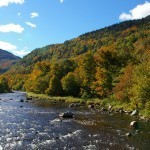
As I stepped out of the car, I took a deep breath. It wasn’t the warm, sweet air of a traditional honeymoon in some exotic location. It was cool and clean and I was standing in moose poop. How romantic.
I had always dreamed that my honeymoon would be spent lounging by the pool with my new husband, frozen daiquiri in hand, reading trashy magazines and falling asleep in the sun. Unfortunately, that’s just not me. I can’t do it. I need to feel something when I travel, an awakening of sorts. Don’t get me wrong, I can appreciate a strong margarita just as much as the next guy, but I seek more than that. I need more than that.
We were in Lake Placid, New York, at just the right time and it was everything I wanted. The leaves were somewhere between late summer and early winter, they were simply a joy. I felt as though we had a secret being here. We knew something that everyone else had forgotten. As we began our hike that day in the heart of the Adirondacks I started to think about my life. In places like this, at moments like this, I did my best thinking. My head was clear, my body felt alive and I stopped and held my face to the autumn sun. I felt gratitude. I felt spoiled. In times like these I could really focus my attention on the present. There were no cell phones, no TVs, no bills. There was warm sun, cool air, the mountains, the lakes and the love of my life.
I glanced over at my new husband. I knew that if we could enjoy ourselves in a setting like this, free from all of the hindrances of life, we were going to make it. We approached a waterfall and stood for a moment, in awe of the captivating scene. That’s the thing about travel, it’s different from vacation. With vacation, you are ‘vacating’ your everyday life. With travel, you are adding to your life, learning and seeing and doing. I felt free here. I reached for the water and let it rush over my hand. With so many digital distractions, it’s nice to feel something real. There is unlimited access to pictures, articles and videos about faraway people and places, but nothing beats the real thing.
Here and now, I feel the rush of life. I can see the sharp reds and yellows in the trees, I hear nothing and everything all at once, and I feel like the day will go on forever. There is an adrenaline that accompanies trips like these and I will continue to seek out this high for the rest of my life.
Later in the day, we enjoy an afternoon beer overlooking Mirror Lake. Despite the dropping temperature we are sitting outside, trying to savor every bit of the fading sun. As I look out over the stillness of the lake, I take a mental photograph. We will never be here again, in this exact moment and I want to capture it. I don’t feel the need to take an actual picture of my husband or myself, our food or even the beauty of the lake because I want to relish in the freedom that I’ve been awarded. I don’t know what life will bring us, but for right now, I consider this a gift.
As we make our way back to our hotel, I can’t help but feel that I’ve had a productive day. I’ve added to my life, added feelings, emotions and thoughts. I’ve been inspired. I’ve seen and felt beauty. I’ve taken a moment to stop and enjoy the ride. I smile at my husband knowing that we’ve experienced something that no one can take away from us. This is the epitome of freedom. As we head into the hotel, I am already feeling the excitement of the next day. The promise of something new. But, first, I need to change my shoes.
Thank you for reading and commenting. Please enter the Gratitude Travel Writing competition and tell your story.
The post Life and Love in Lake Placid, New York appeared first on We Said Go Travel.
We Said Go Travel
We Said Go Travel is a global community of over sixteen hundred writers with articles from every continent.
Stories are shared with photos and video from a perspective of the transformative power of travel. We Said Go Travel has hosted live and online events as well as travel writing contests around the world. ...more
- Lisa Niver's profile
- 57 followers



